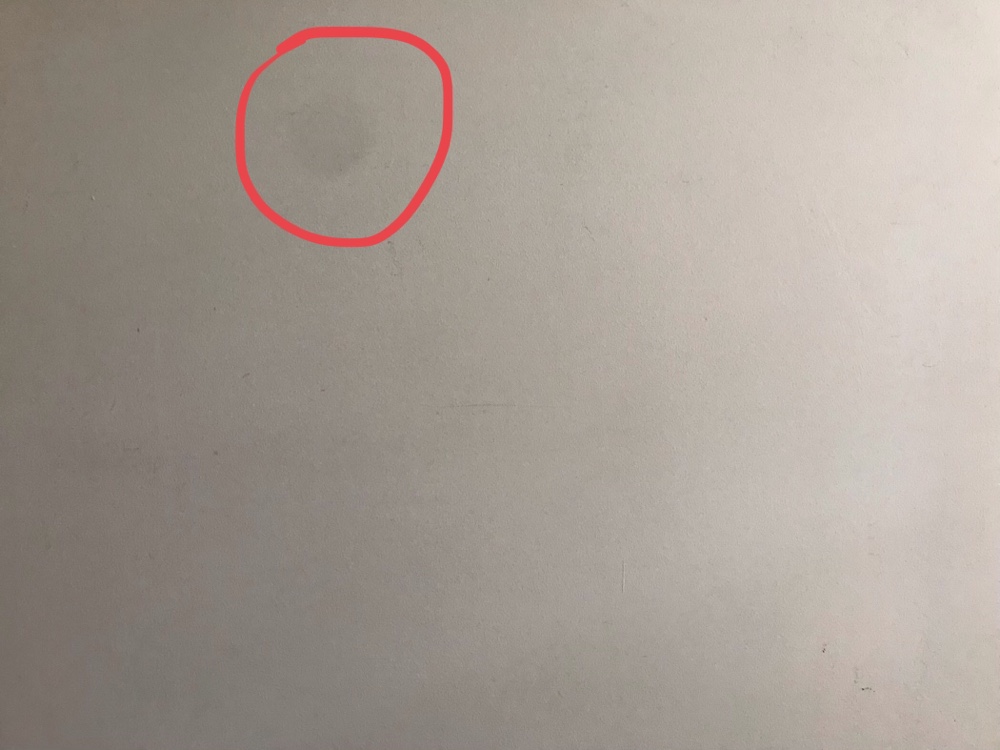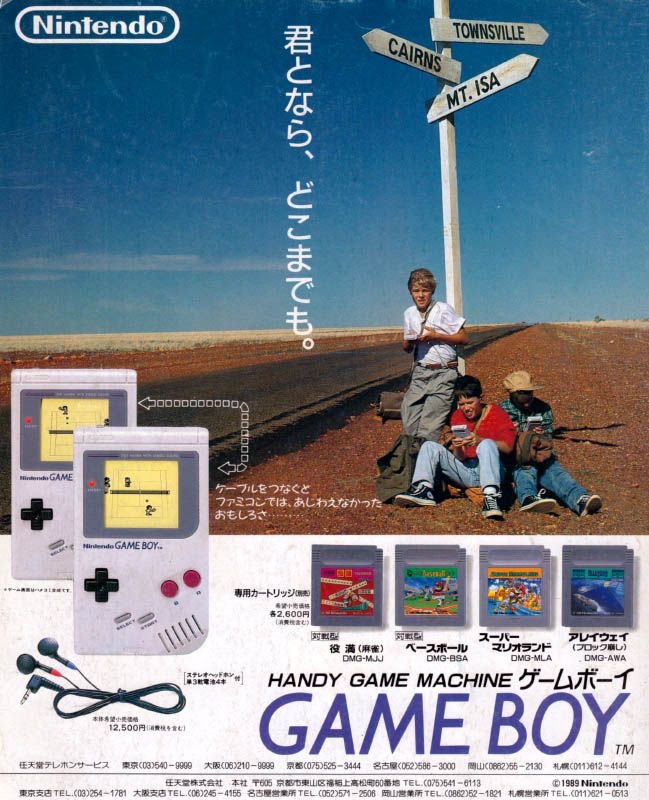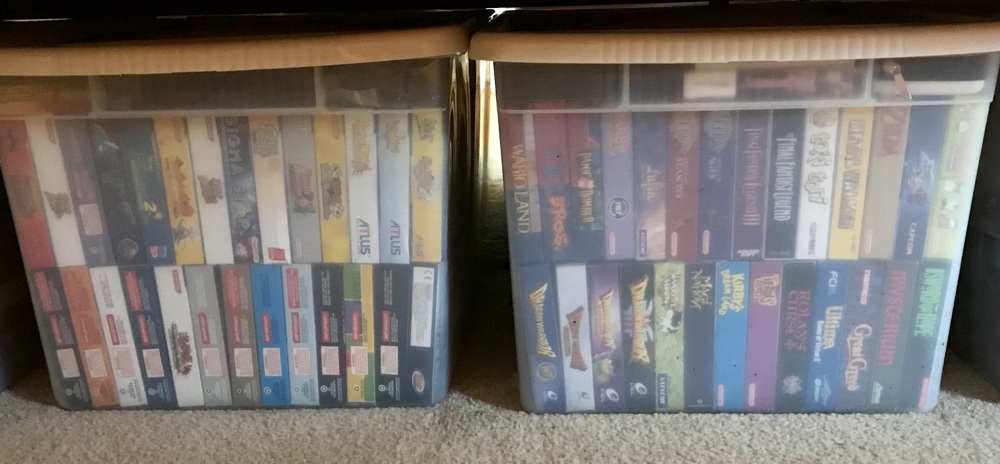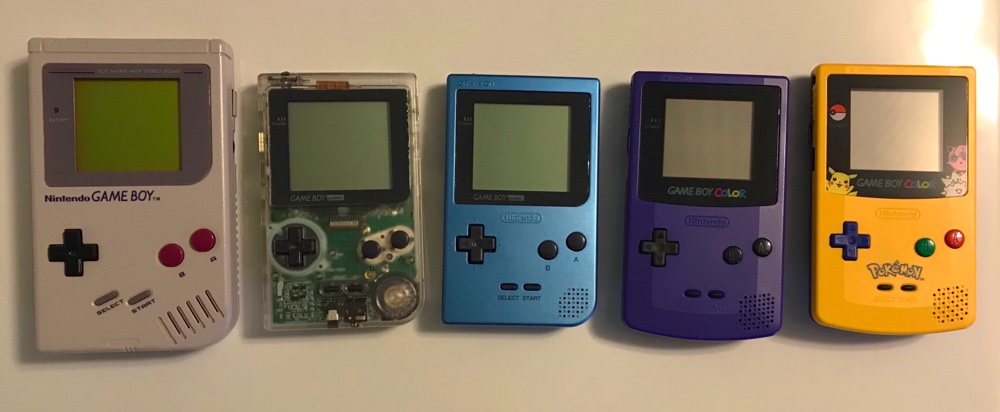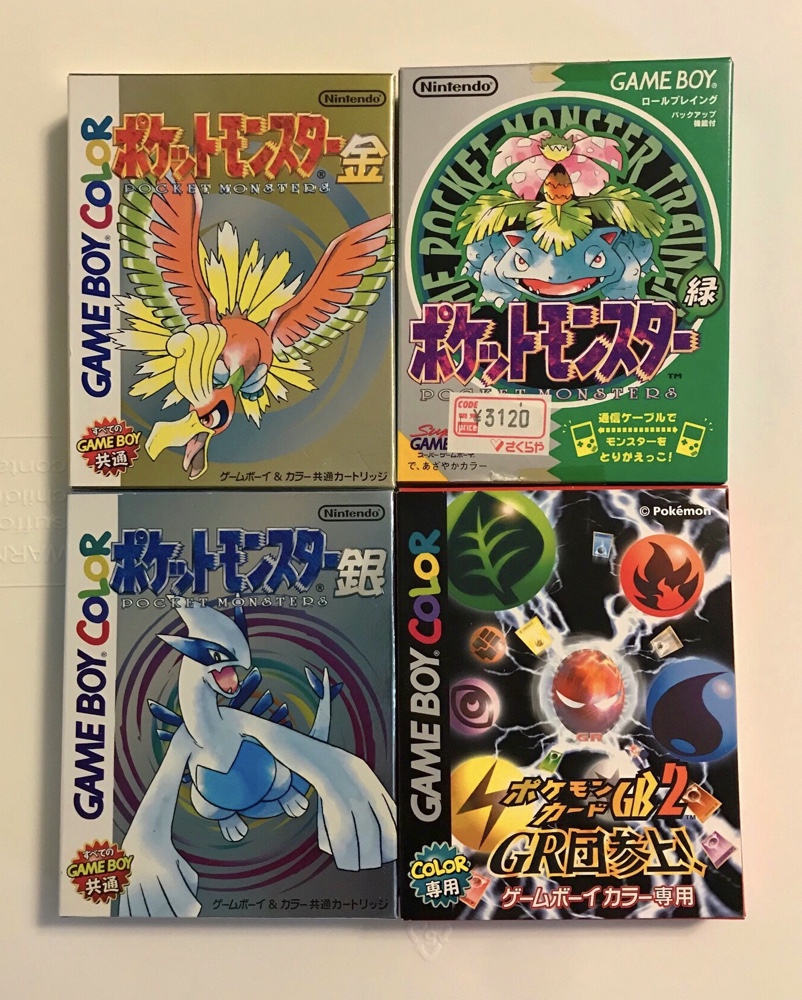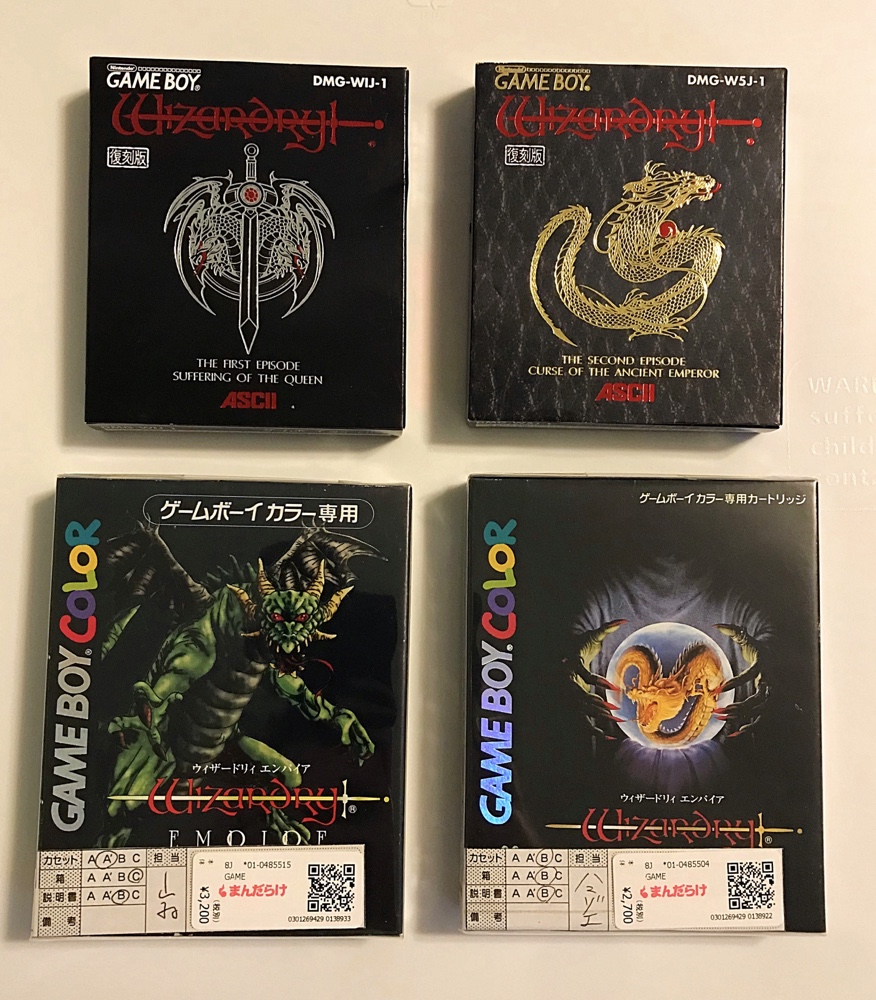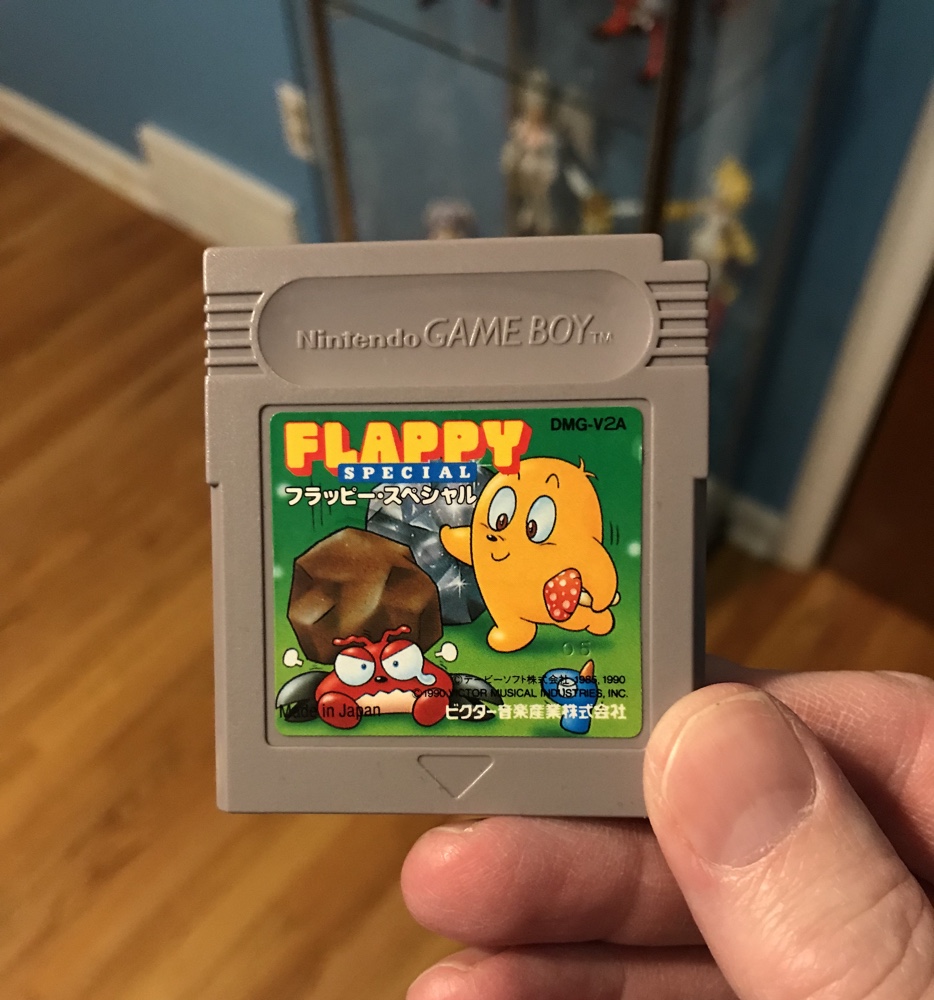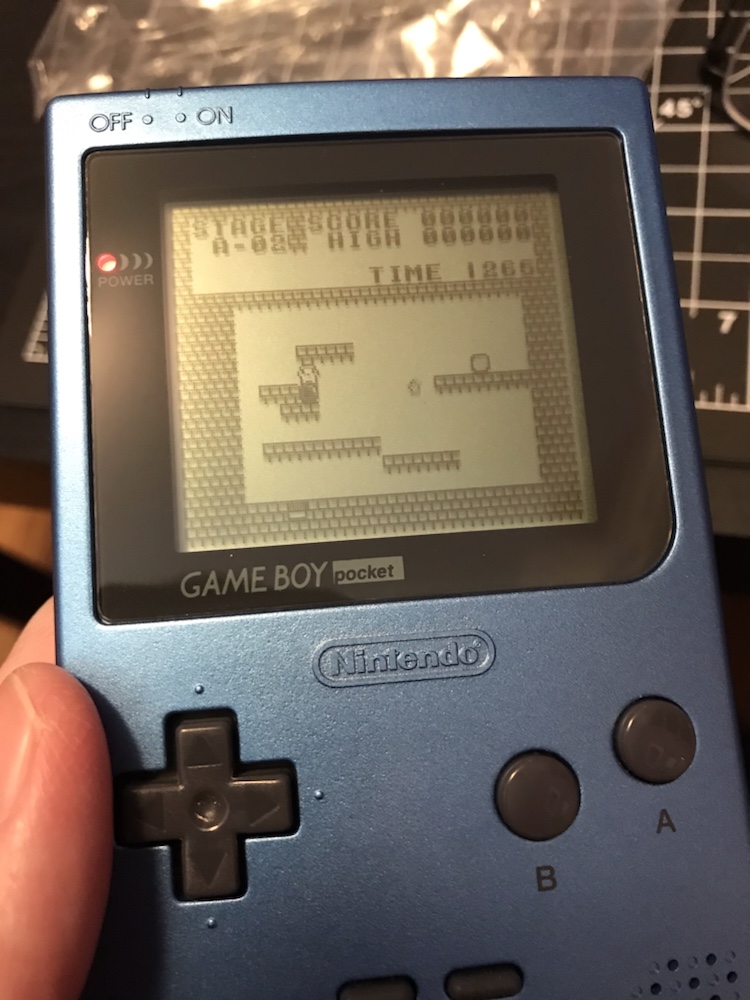In 1995 Nintendo released their Virtual Boy console. It utilized monochrome red stereoscopic 3D graphics and became a legendary failure, being pulled from the market in under a year. The launch price was $180; eight months after launch I bought mine – an ex-rental – for $30.

When assembled for use it looks like this:
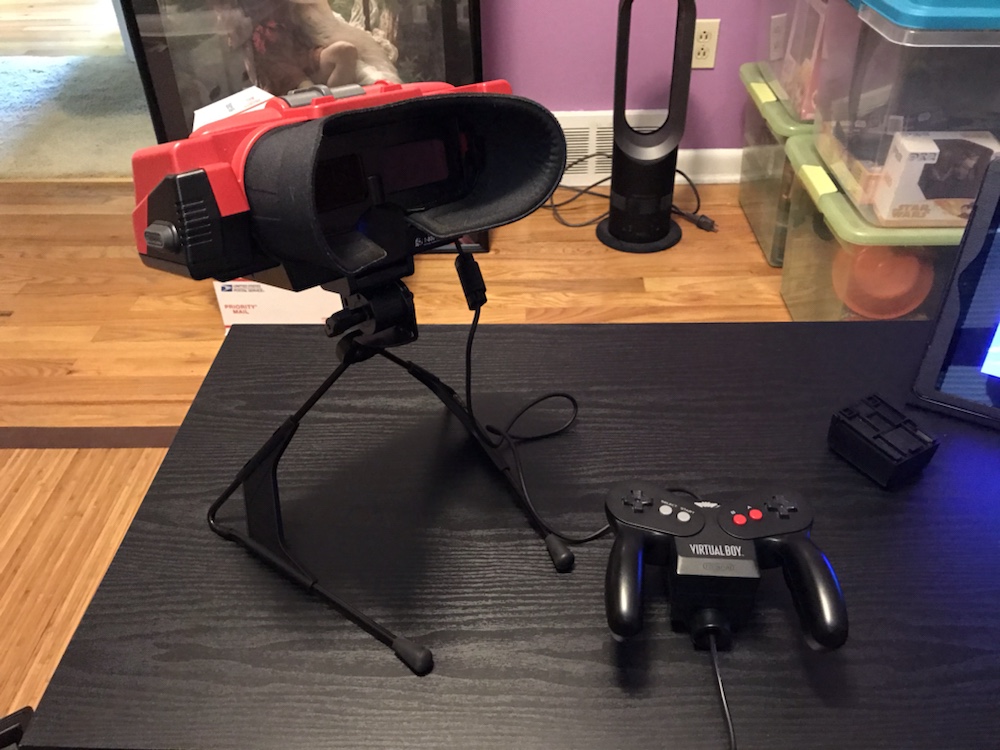
And is played like this:
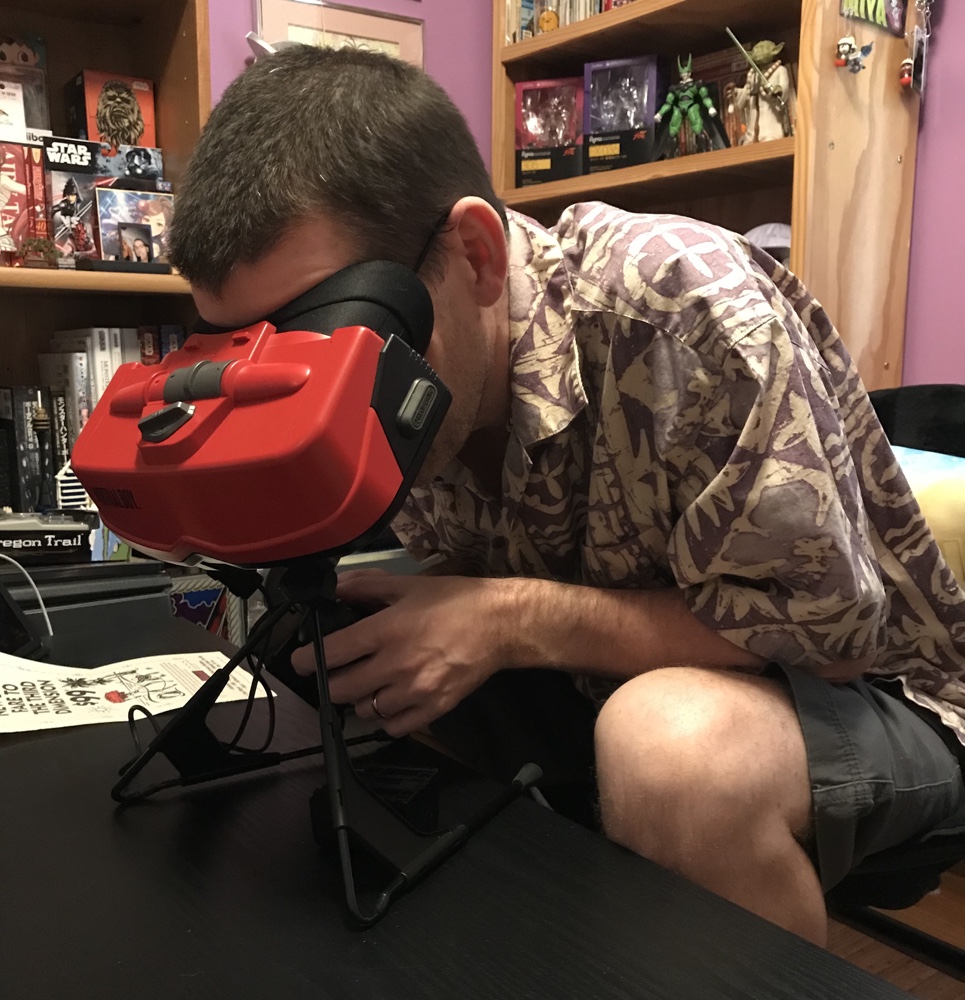
While playing you view two screens – one each eye – which form a 3D image via parallax. It’s very effective – ‘true’ 3D – and almost impossible to photograph. But I tried:

While the 3D effect is convincing, there are three significant problems with the device:
1) The games are poor.
2) The posture required to actually play it is painful.
3) Playing hurts the eyes and for most people (myself included) causes headaches in only minutes.
It’s incredible this was ever released since these serious issues are obvious after even casual use. I remember after it launched I knew it would fail, and was never seriously interested in buying one even after the first price cut (this is an advert I kept from a late 1995 comic):

Only 14 games were released in the USA (22 worldwide) and I own four:

All of these were purchased brand new for $10 apiece (games were $30 at launch). I got Red Alarm the day I got the system, and the others about six months later. I recall playing the Wario game to completion but barely played the others.

The cartridges are large but very thin, and quite collectible today. The game shown above may be my priciest single game, with boxed copies on eBay right now for $900 (yes, nine hundred). It’s notable for being the last and rarest game for the system and for being linked to the Persona series.
I only paid $70 for my system and games. I could probably sell it all for $1000+ today. Not bad for one of the biggest failures in video game history.


